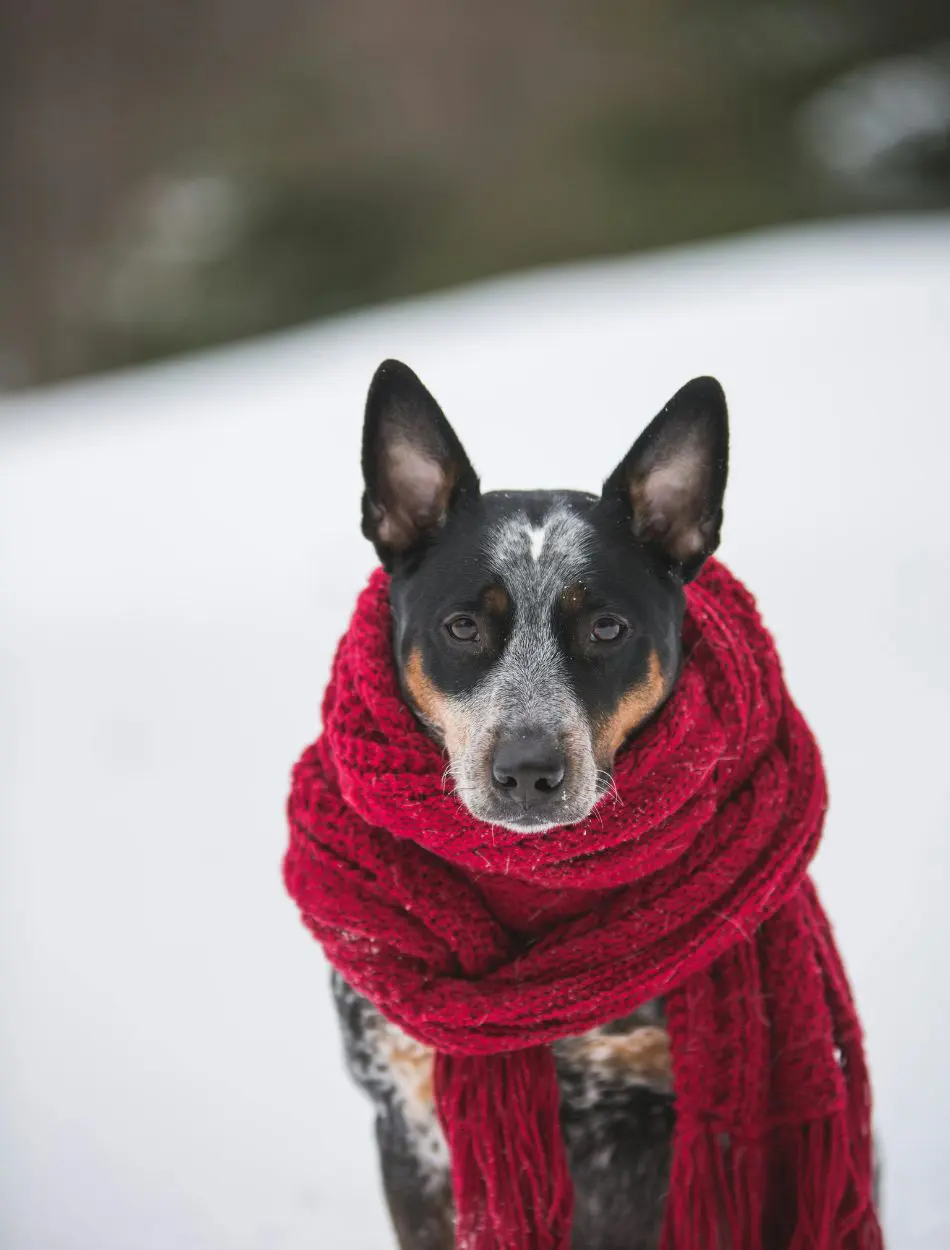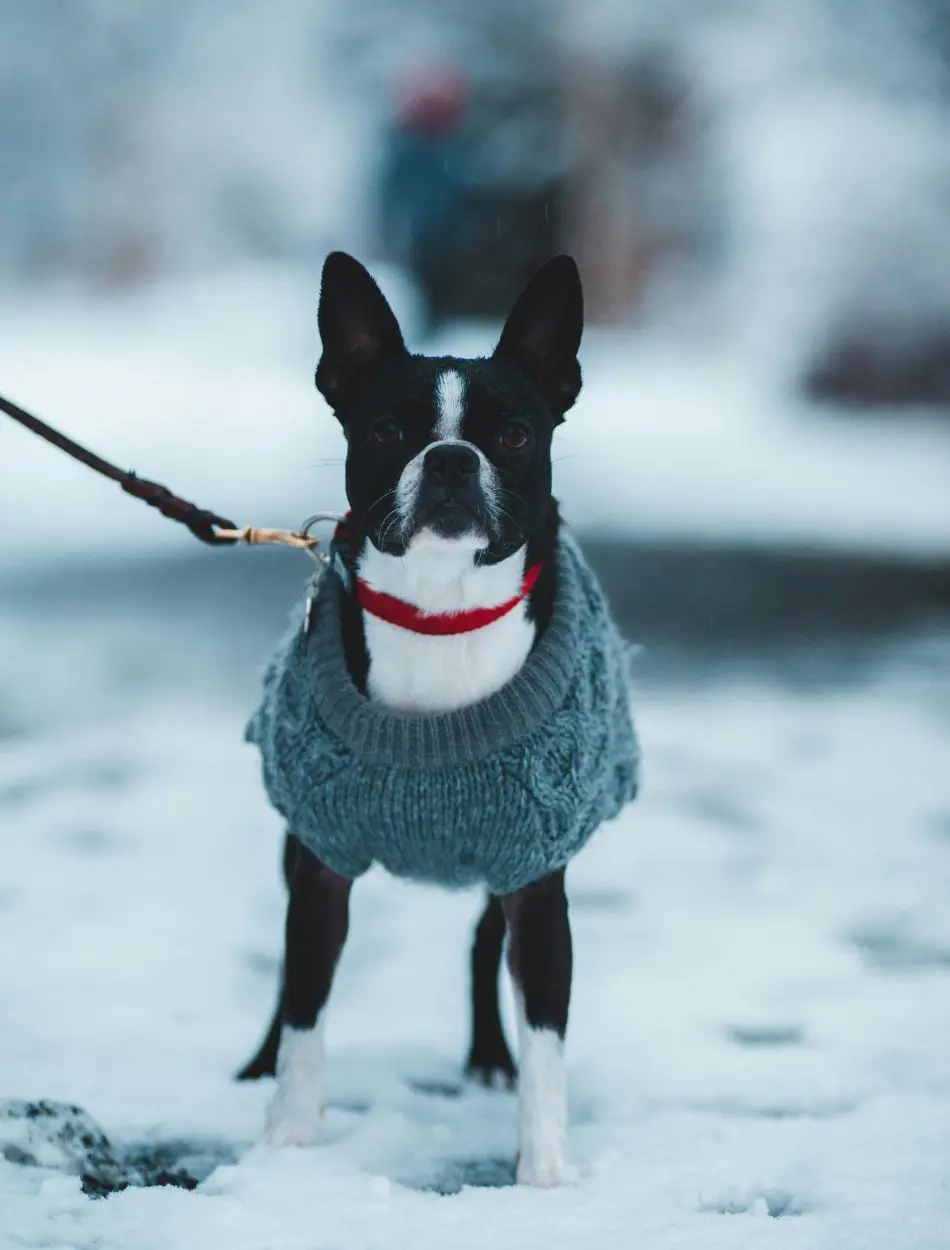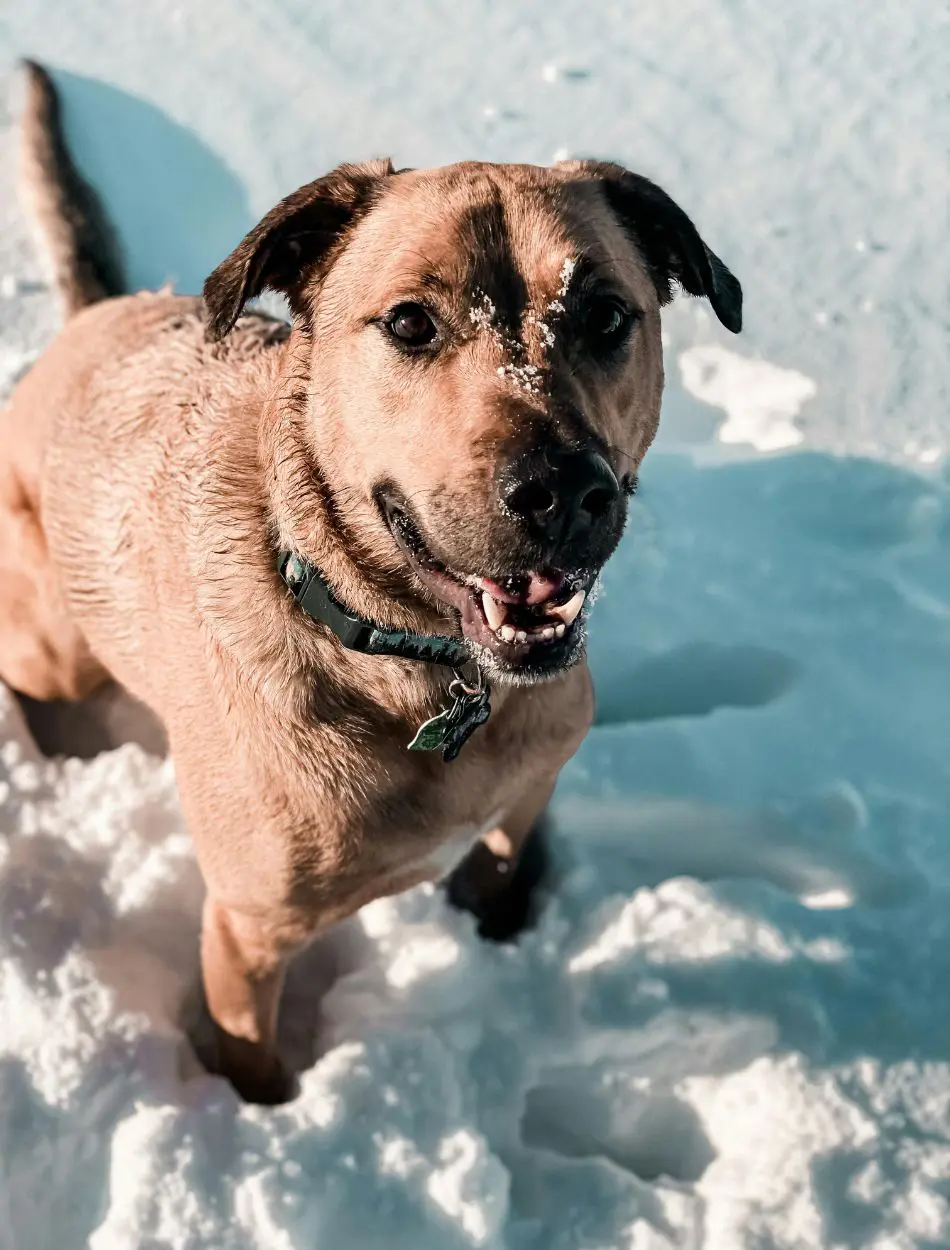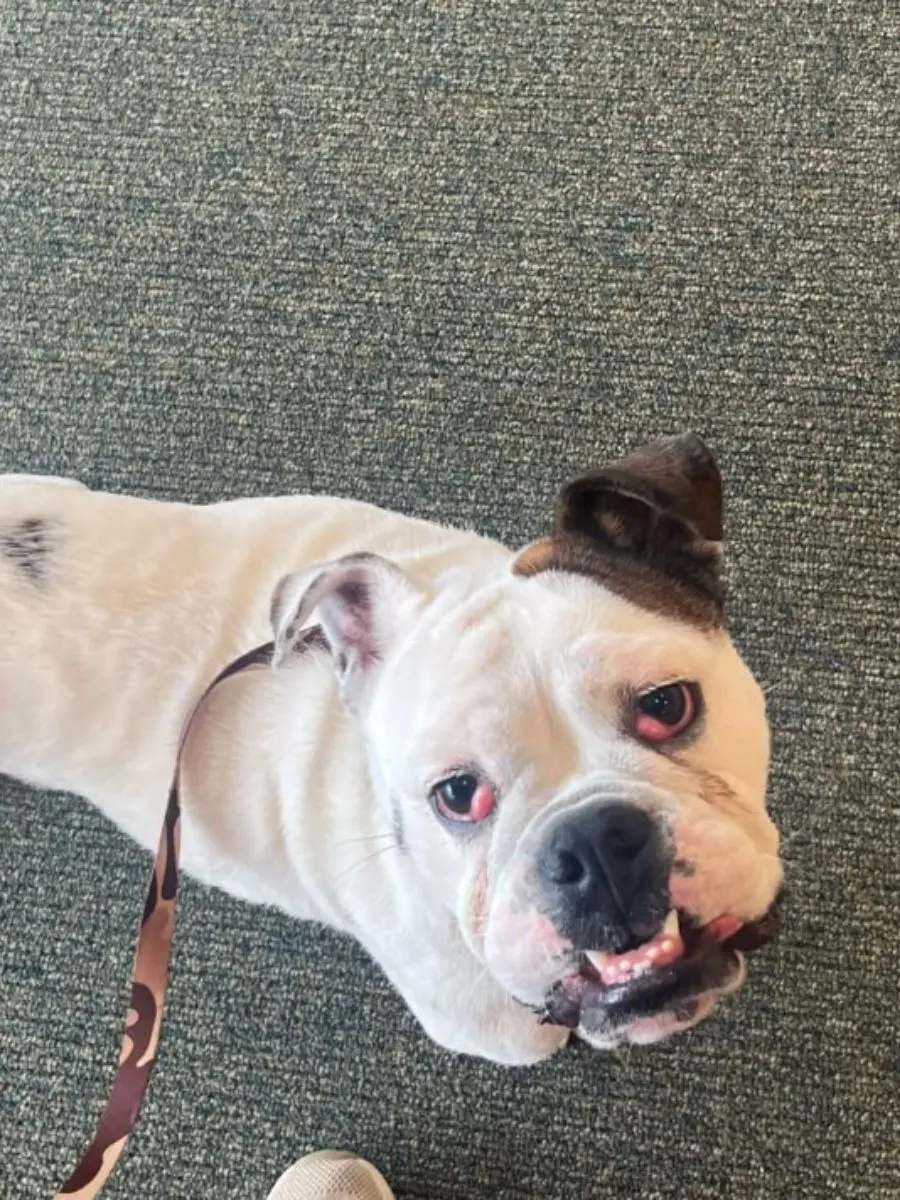18 Signs Of Hypothermia in Dogs

Hypothermia is a condition in which a dog's body temperature drops below normal which can occur due to exposure to cold weather, getting wet, or inadequate shelter. It's crucial to be able to recognize the signs of hypothermia in your dog for their health and safety.
Now, we will mention 18 different signs of hypothermia in dogs. Each of the signs will be explained in a format that will give you a better understanding of the symptoms to look out for. Now, upon noticing these signs, you will immediately know how to safeguard your dog from hypothermia dangers.
1. Shivering And Trembling

Shivering and trembling in dogs are very common and can be the first symptoms of hypothermia. When the body temperature drops, a dog will shiver as part of its nature to build up heat through muscle activity, and this involuntary action will increase the body temperature temporarily. If the shaking or shivering persists and the dog is not warming up, that may already indicate a worse level of hypothermia.
It's essential to provide warmth immediately so the condition doesn't worsen. Apart from shivering, you can also notice your dog shake uncontrollably. This can present the idea that the dog could be either anxious or scared when it's just a purely physical reaction to cold stress. In case you observe your dog is shivering, do whatever it takes to warm it up by wrapping it up in a blanket, moving it to a warmer area, or using a heating pad on low. Always be sure to keep a close eye on the dog during the warming-up process to prevent overheating.
2. Lethargy And Weakness
Probably one of the most important signs that a dog may be experiencing hypothermia is weakness and lethargy. What happens here is that lots of energy is channeled towards the vital organs, with very little being left for other activities. Maybe your dog is tired, acting very lethargic, refusing to move, or getting all these symptoms that the cold has had an impact on the dog's normal functioning.
Lethargy can sneak in very quickly with hypothermia in dogs, so if you see these signs, get your dog to a safe and warm place to lie down immediately. You can use warm towels or blankets to elevate your dog's body temperature. Moreover, ensure the drying of your dog because wet fur can increase the rate of hypothermia, and consult a vet as soon as possible.
3. Pale Gums And Skin
Pale gums and skin are very clear indications of hypothermia in dogs. When the animal's body reduces blood flow to prevent heat loss, color in the gums and skin is driven away. In hypothermia, the gums can turn pale or even white from their normal healthy color of pink due to poor circulation. You can easily check your dog for hypothermia by examining its gums.
If your dog has pale gums, he should be warmed up. Gently massage the gums to restore blood flow, all the while keeping him in a warm environment. You can also allow the dog to lie covered under a blanket with access to warm, not hot, water to drink. This will improve blood circulation and increase his body temperature. Monitor your dog at all times. You should get him to a veterinary facility as soon as possible.
4. Slow Heart Rate

Dogs have an instinctual response to rectify the situation by slowing down the activities that involve the use of energy which leads to them having slow heart rates. A low heart rate in dogs could be a direct indication that their core body temperature has dropped too low and it should be attended to quickly before things deteriorate further.
You can check your dog's heart rate by feeling for a pulse on the inside of his hind leg where the thigh meets the body. If the pulse feels slower than normal, it's vital to seek action fast. Move the dog into a warmer area and use warm blankets or heating pads to help raise its body temperature. Just make sure that throughout, the dog is never left unattended. This often mandates veterinary intervention to stabilize the heart rate before effective treatment of hypothermia can be instituted.
5. Difficulty Breathing

Difficulty breathing is one of the dangerous signs of hypothermia in dogs. It is an indication that the cold has affected respiratory function, making it hard for the dog to breathe normally. You may feel your dog panting heavily or breathing shallowly and struggling with short breaths. The symptoms may worsen as body temperature continues to drop and are, therefore, a call for emergency action to curb the underlying cause.
In case your dog has breathing problems from hypothermia, move him to a warm environment and try to keep the dog as calm as possible. Stress will elevate the breathing problem. You should use a humidifier to wet the air. It may make breathing a bit easier for your dog, but avoid the hot air. Keep your dog dry and warm. Be sure to see a vet for further treatment and care.
6. Stiffness And Muscle Tension
Stiffness and muscle tension are common signs in hypothermic dogs since the muscles are rigid because of contraction due to cold, which therefore heightens an inability to move easily and causes discomfort. Your dog can either walk crippledly, hunch its back, or even hurt its muscles at touch; such behavioral traits in your dog are a clear indication that it is highly affected by the cold in its muscular system.
It will include gradual warming of your dog through warm blankets and maintaining it in a warm environment and gentle massage to help relax the muscles and increase blood flow. Note that sudden movements and strenuous activity will cause more discomfort to the dog; therefore, always seek veterinary advice to ensure proper treatment of hypothermia-related muscle problems in your dog.
7. Lack Of Coordination

Lack of coordination in dogs which is also known as ataxia occurs when the cold starts to get to their nervous system and motor function. You might see your furry friend stumbling around, having trouble walking in a straight line, or just seeming disoriented. Either way, such signs mean the cold is whaling on them hard, and you should take action fast to make sure they don't get worse.
If your dog appears uncoordinated due to hypothermia, it needs to be warmed up by placing it in a warm environment without moving it to prevent injury. Use warm blankets and gentle heat to raise its body temperature and improve its coordination. Keep a close eye on your dog and seek veterinary care for the necessary professional treatment for the nervous system effects of hypothermia.
8. Dilated Pupils
One of the key signs of hypothermia in dogs is dilated pupils. The cold affects the nervous system, causing changes in the dog's eyes. Normally, a dog's pupils should respond to light by constricting or dilating, but in the case of hypothermia, they can become dilated and even stop responding to light. This change in the pupils can indicate significant stress on the dog's body. Observing your dog's pupils can provide important clues about their condition.
In case you observe this condition in your dog, instantly get it warmed up and move them to a warm and safe place. Blankets or heating pads might be used to raise the body temperature by keeping the animal warm, but one has to take care that it does not get overheated. Also, a quiet and peaceful place is most helpful in reducing stress and letting the body recover. Veterinary care is imperative for appropriate treatment and management of the associated underlying pathology with hypothermia.
9. Cold Ears And Paws
Cold ears and paws are the most apparent signs of hypothermia in dogs. Blood flow is channeled to vital organs when the body temperature drops too low, so it becomes evident that extremities will be cold to the touch. You might notice that your dog's ears and paws have become exceptionally cold, thereby distinctly showing that the body temperature has fallen too low. Such a result could, therefore, be established by checking these areas at regular intervals.
Gently rub the ears and paws to bring blood flow. Warm the areas with small towels, not hot ones, to provide some warmth. The overall body temperature of your dog can also be increased by keeping him as warm as possible in blankets. However, always watch your dog closely; in case your dog still displays cold ears and paws, then you should consult your vet, as there may be a severe problem of hypothermia.
10. Low Body Temperature

Low body temperature, or hypothermia, is one of the most direct indications that a dog is going through this, and it occurs when the temperature drops below the normal range: 101-102.5 degrees Fahrenheit. You will know for sure if your dog is experiencing hypothermia by taking its temperature using a rectal thermometer. If the reading is way below the norm, then serious action should be taken.
If your dog's temperature is too low, then move it to a warm area and provide blankets, electric heating pads, or warm water bottles. Make sure the dog is dry because wet fur will worsen hypothermia. Warm up the dog slowly to avoid shock, and monitor temperature frequently for the restoration of normal body temperature. Veterinary help is essential for the treatment and management of hypothermia in dogs.
11. Confusion And Disorientation
Confusion and disorientation are among the more alarming signs of hypothermia in dogs. The cold will impact brain functioning and decrease cognitive abilities. Due to this drop in body temperature, your dog can appear lost, unable to identify familiar people or places, or even behave strangely. If you observe these symptoms, you know immediate action is required.
If your dog is confused because of hypothermia, move to a warm, quiet space to help reduce stress, and some gentle warmth may be provided using blankets or heating pads. Don't startle the dog, and reassure him that all is well by remaining calm and gentle. Keeping him as hydrated as possible will allow him to make the recovery process easier. It is important to seek veterinary care to manage changes in cognition associated with hypothermia, as well as for proper treatment.
12. Whining Or Whimpering

Whining or whimpering could be ways in which a dog shows distress from hypothermia. Being cold can be uncomfortable, painful, and frightening for them. You might hear unusual vocalizations from your dog, indicating that they are cold and perhaps scared. Monitoring these sounds can give you a clue about hypothermia at an early stage, allowing you to provide the appropriate response and comfort.
If your dog is displaying such behavior due to hypothermia, move it to a warm environment and wrap it in blankets to provide warmth. Speak to your dog in a soothing voice to create a feeling of calmness and reduce anxiety. You can also offer warm water to help increase its body temperature. Keep a close eye on your dog and consult a veterinarian to ensure proper care and recovery.
13. Reduced Appetite
Loss of appetite in dogs can be an indication of hypothermia because the body retains as much energy as possible and focuses its usage on important parts of the body; hence, it reduces interest in food. You may note that your dog has no interest in its usual food or even takes much less than usual. This can be an indication that the cold is interfering with his metabolism. Monitoring your dog's eating habits will help you identify hypothermia.
Encourage eating in a hypothermic dog by offering warm, palatable, easily digestible food and keeping the dog warm to stimulate appetite. Feeding small amounts of food more frequently may also be helpful. Monitor your dog's food intake at all times and consult with your veterinarian if he does not respond in this manner for a given period, as proper nutrition is highly necessary for your dog's recovery from hypothermia.
14. Decreased Urination

Decreased urination in dogs may indicate hypothermia since their body tries to conserve water to prevent further loss of heat. Probably, you have observed that your dog is urinating much less often, or even the amount of urine is lesser indicating that its body is trying at all costs to retain fluids. Monitoring the urination habit of your dog will help in the realization of hypothermia early enough to take appropriate action.
In case of a low urine output in a hypothermic dog, ensure the animal is well hydrated with warm water or electrolyte solutions. Transfer the dog to a warm area to support the return to normal bodily functions. Monitor fluid intake and output and consult with a veterinarian to ensure proper hydration and treatment for hypothermia.
15. Frostbite
Frostbite is the most dangerous manifestation of hypothermia in dogs which consists of damage to tissues by cold temperatures, mostly involving ears, tails, and paws. The discoloration of some parts of the skin to pale, gray, or blue would reflect that it is freezing and early identification may help to prevent some permanent damage or complications of frostbite.
To treat frostbite in dogs, gently warm the affected areas by immersing them in warm water, then bundle the dog up in blankets to bring its overall body temperature up. Do not rub the frostbitten areas since this may cause further damage. The reason is that professional treatment is required to deal effectively with frostbite and hypothermia; thus, you should seek veterinary care right away.
16. Shallow Pulse
One of the major symptoms of hypothermia in dogs could be a shallow pulse, which means their body is trying to conserve energy and that less blood is flowing. You may get the sense that this pulse feels weak or slow when you have checked it on the inside of the hind leg where it joins the body. Pulse monitoring would give very useful information concerning the condition of the dog.
To remedy a weak pulse in a hypothermic dog, transfer it to a warm environment and offer blankets or heating pads with mild warmth; the dog should remain dry. Minimize movement keep the dog from stress, and give warm water if the dog is conscious. Veterinary care is necessary for pulse stabilization and effective hypothermia treatment.
17. Blue Or Gray Lips

One of the most evident outward signs in a dog that the cold is affecting its circulation and oxygenation could be blue or gray lips. A healthy dog should have lips colored pink, but in cases of hypothermia, the lips may turn blue or gray. That will just show that the body is going through a lot of stress. This is hypothermia, and you can easily tell if your dog's lips are pink.
If one finds bluish or gray lips on a dog, it is very important to immediately warm the dog in a warm and safe location. Blankets, or heating pads, should provide some heat; just watch for overheating. Keeping the space calm and quiet can also lessen their stress, allowing them to recover. Consultation with a veterinarian will be quite important to treat the pet correctly and deal with possible issues associated with hypothermia.
18. Collapse Or Coma
Collapse or coma is the most serious and potentially lethal sign of hypothermia in dogs, conveying a low body temperature to the point at which a dog is no longer able to function normally. You might notice that your dog is unconscious or unresponsive, whereby in such a state, there should be immediate emergency intervention to prevent death.
In case your dog collapses or falls into a coma due to hypothermia, move it to a warm environment, wrap it in blankets, and try to avoid movement and stress since they tend to deteriorate the condition. Also, provide warm water to drink in case the dog is conscious to help in raising its body temperature. Seek veterinary care immediately; expert treatment is essential in stabilizing the condition of the dog and in recuperation from the situation.
Top Lists








